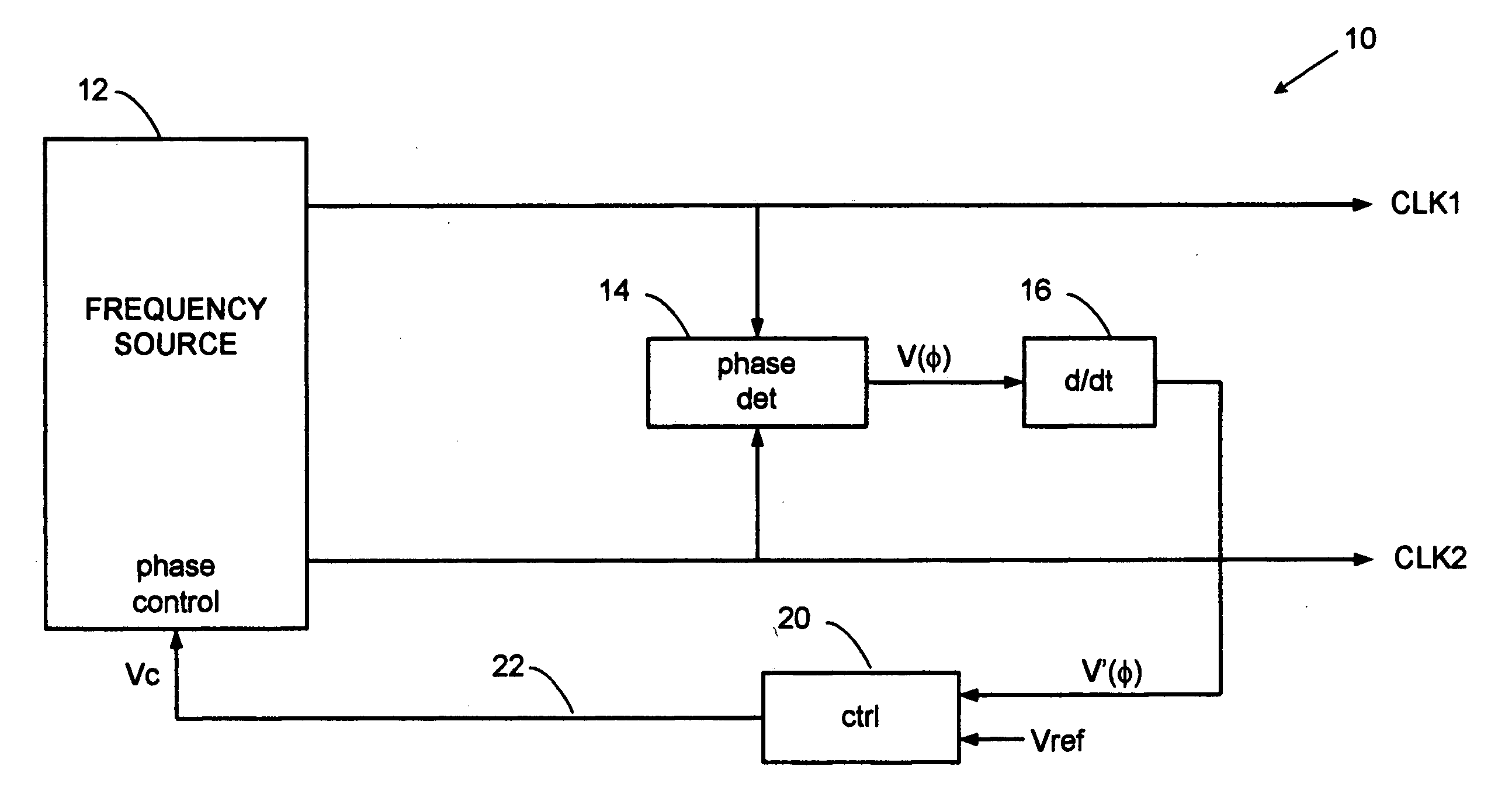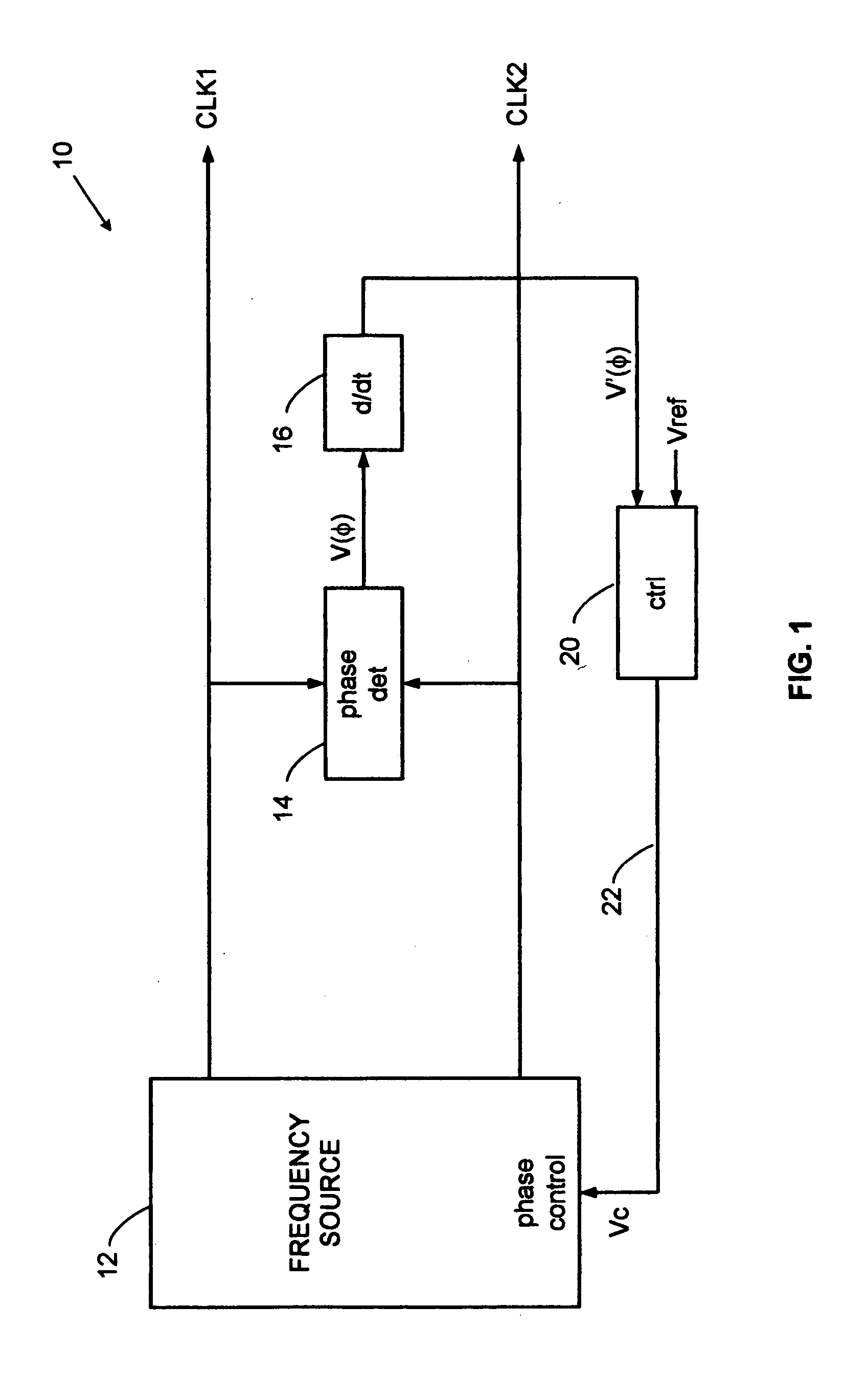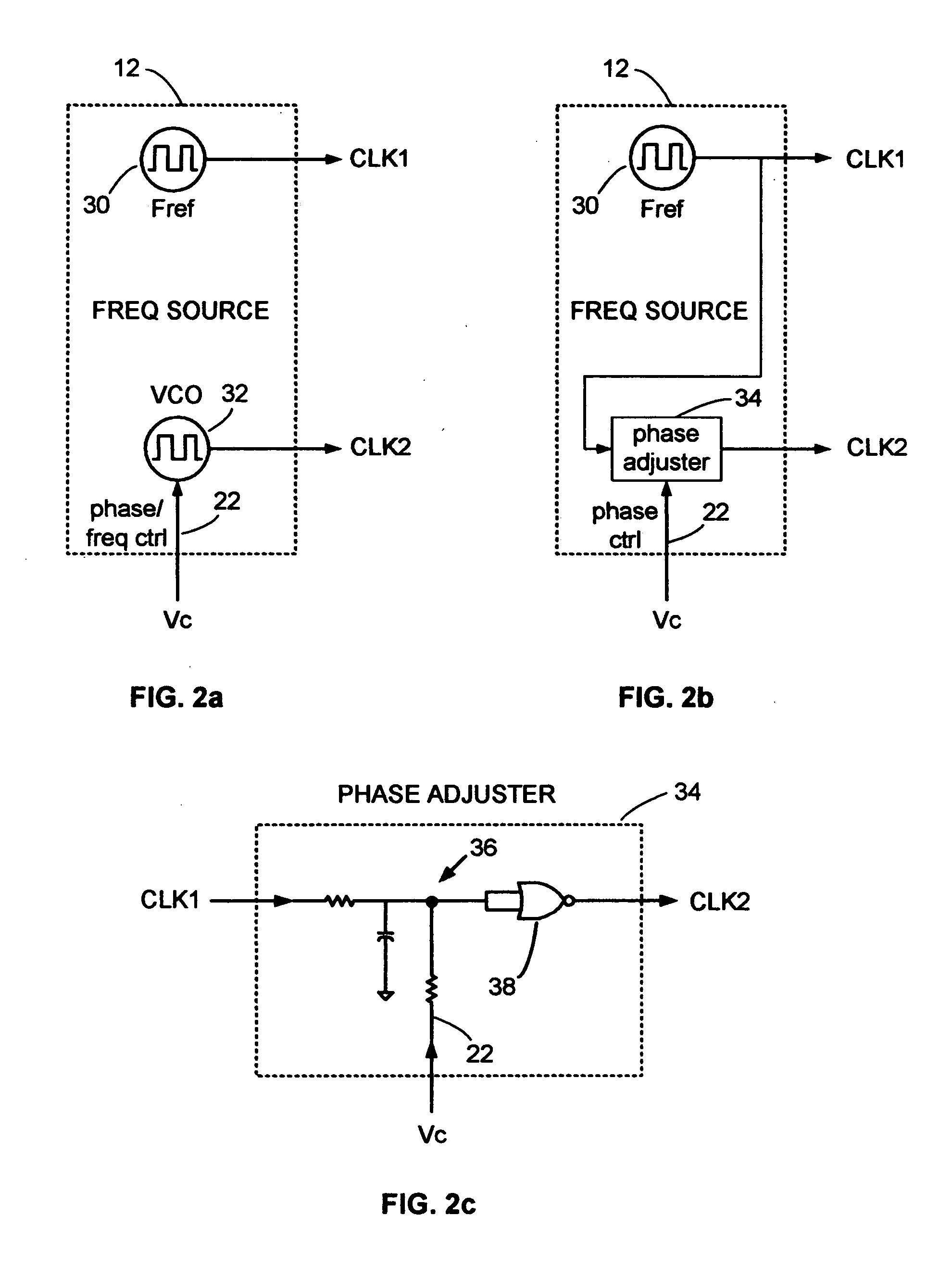Rate locked loop radar timing system
a timing system and lock loop technology, applied in the field ofradar timing circuits, can solve the problems of easy to assume that the timing circuit is somehow perfect, the accuracy of the two-oscillator technique is limited, and the accuracy of the phase slip is not easy to measure accurately
- Summary
- Abstract
- Description
- Claims
- Application Information
AI Technical Summary
Benefits of technology
Problems solved by technology
Method used
Image
Examples
Embodiment Construction
[0024] A detailed description of the present invention is provided below with reference to the figures. While illustrative component values and circuit parameters are given, other embodiments can be constructed with other component values and circuit parameters. All U.S. patents and copending U.S. applications cited herein are herein incorporated by reference in their entirety.
General Description
[0025] The present invention overcomes the bandwidth limitations of a PLL controller by directly controlling the phase slip rate on a continuous and instantaneous basis. A beneficial example embodiment, as disclosed herein, employs a phase detector coupled directly between two oscillators, rather than through counter chains that are customary in PLL circuits, to produce a voltage proportional to instantaneous phase. When the phase between the oscillators slips at a constant rate, because of the offset frequency, the phase detector output is a linear voltage ramp that increases for increas...
PUM
 Login to View More
Login to View More Abstract
Description
Claims
Application Information
 Login to View More
Login to View More - R&D
- Intellectual Property
- Life Sciences
- Materials
- Tech Scout
- Unparalleled Data Quality
- Higher Quality Content
- 60% Fewer Hallucinations
Browse by: Latest US Patents, China's latest patents, Technical Efficacy Thesaurus, Application Domain, Technology Topic, Popular Technical Reports.
© 2025 PatSnap. All rights reserved.Legal|Privacy policy|Modern Slavery Act Transparency Statement|Sitemap|About US| Contact US: help@patsnap.com



